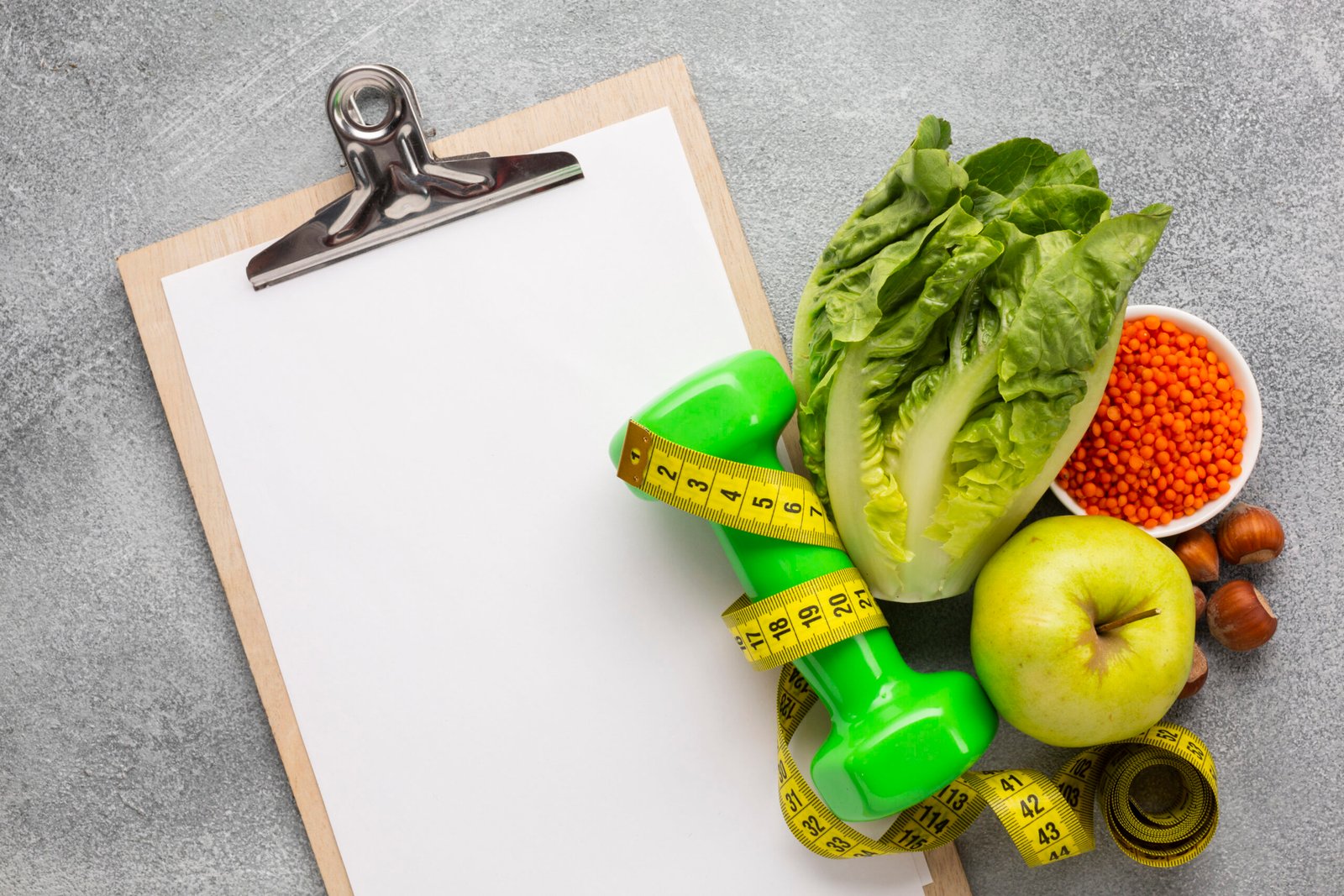How to Lose Weight: 7 Practical Tips to Speed Up Your Metabolism and Lose Weight Sustainably
Hello, my name is Carla. What I hear most about weight loss is that metabolism is great for some and a nightmare for others. Even though I haven’t experienced it myself, I can only imagine how difficult it must be for some people. That’s why I started doing some research on the subject.
In this article, I’ll share seven tips that can help you speed up your metabolism and, consequently, make weight loss a more effective and, most importantly, sustainable journey for your health.
Weight loss has always been a relevant topic in society, not only for its aesthetics, but mainly for its positive impact on health and general well-being. The search for effective and sustainable methods on How to Lose Weight leads many people to look for strategies that really work in the long term.
In this article, we will explore How to Lose Weight in a healthy and sustainable way, especially in relation to a slow metabolism, a common challenge that many people face. We will reveal proven tactics that not only help with How to Lose Weight, but also promote a healthier life.
Throughout this text, you will learn about the foundations of healthy How to Lose Weight, the influences of metabolism and practices that can be easily integrated into your routine, as well as valuable tips to make your journey easier. Get ready to discover a new perspective on How to Lose Weight and how to adopt habits that can transform your life.
The Importance of Sustainable Weight Loss: How to Lose Weight and Keep It Off

Losing weight isn’t just about the numbers on the scale. For many, the quest for a more sculpted body can turn into an obsession, often leading to radical and unsustainable diets. The importance of sustainable weight loss lies in creating habits that can be maintained over time, avoiding the yo-yo effect and promoting robust health.
In addition, losing weight in a healthy way is essential to reducing the risk of chronic diseases, such as type 2 diabetes, hypertension and cardiovascular disease. A study by PubMed Central revealed that even a modest weight loss of 5 to 10% can lead to significant improvements in metabolic health and quality of life. This holistic approach to weight loss goes beyond aesthetics; it’s a way of taking care of yourself.
Understanding Slow Metabolism
Metabolism is the set of chemical reactions that occur in the body to convert food into energy. Everyone’s metabolism is different, influenced by factors such as genetics, age, gender, and level of physical activity. What many people don’t realize is that a slow metabolism can be one of the main obstacles to How to Lose Weight.
There are several reasons why your metabolism can be slow, including poor eating habits, low levels of physical activity, and even medical conditions such as hypothyroidism. Understanding what affects your metabolism is essential to adopting effective strategies that help you How to Lose Weight. Below, we will discuss some practical tips that can speed up your metabolism and help you How to Lose Weight.
Practical Tips to Speed Up Your Metabolism
There are several ways to boost your metabolism and make weight loss easier. Here are some proven tips you can implement into your routine:
- Increase physical activity: Aerobic and strength training exercises not only burn calories, but they also increase your muscle mass, which can speed up your metabolism.
- Consume protein: Digesting protein requires more energy than digesting carbohydrates or fats, which can temporarily increase your metabolism.
- Stay hydrated: Water is essential for your metabolism to function. Drinking enough water can temporarily increase your metabolic rate.
- Opt for smaller, more frequent meals: This can help keep your metabolism active throughout the day.
- Avoid extremely restrictive diets: These can lead to fat retention and a decrease in metabolism.
In addition to these tips, analyzing your daily routine and eating habits can reveal other aspects that can be adjusted to optimize your health. Below is a table that summarizes.
| Food | Benefit |
|---|---|
| Green Tea | Contains catechins that can help increase fat burning. |
| Pepper | Contains capsaicin, which can speed up metabolism. |
| Whole Grains | Rich in fiber, they help with digestion and satiety. |
| Fruits and Vegetables | Low in calories and rich in nutrients; helps maintain a healthy weight. |
| Nuts and Seeds | Sources of protein and healthy fats can help regulate metabolism. |
Setting Realistic Goals: The Foundation of Successful Weight Loss

When it comes to how to lose weight effectively, setting realistic and achievable goals serves as the cornerstone of your entire journey. I’ve seen countless people sabotage their own success by establishing unrealistic expectations right from the start.
Many individuals make the critical mistake of setting overly ambitious goals, such as losing 10 pounds in a week or dropping three dress sizes in a month, which inevitably leads to frustration, disappointment, and complete demotivation on their path to how to lose weight successfully.
The harsh reality is that quick-fix mentality rarely translates into lasting results. Instead of chasing these unrealistic targets, consider focusing on long-term, sustainable goals for how to lose weight that will actually stick. Research consistently shows that people who lose weight gradually—at a rate of 1 to 2 pounds per week—are more likely to keep the weight off permanently compared to those who pursue rapid weight loss methods.
The SMART Goal Framework: Your Blueprint for Weight Loss Success
One of the most effective methods for how to lose weight sustainably is implementing the SMART approach to goal setting. This proven framework ensures your objectives are Specific, Measurable, Attainable, Relevant, and Time-bound. Let me break down why each component is crucial for your weight loss success:
Specific: Vague goals lead to vague results. Instead of saying, “I want to lose weight,” be precise about what you want to achieve. For example, “I want to lose 15 pounds to improve my energy levels and fit comfortably in my favorite jeans again.”
Measurable: You need concrete metrics to track your progress. Rather than hoping to “lose some weight,” establish measurable targets like “I want to lose 1-2 pounds per week for the next 10 weeks” or “I want to reduce my body fat percentage by 5% over the next three months.”
Attainable: Your goals should challenge you while remaining within the realm of possibility. Losing 1-2 pounds per week is attainable for most people, while losing 10 pounds per week is not only unrealistic but potentially dangerous.
Relevant: Your weight loss goals should align with your personal motivations and lifestyle. Whether it’s improving your health, increasing confidence, or enhancing athletic performance, make sure your goals matter to you personally.
Time-bound: Deadlines create accountability and urgency. Setting a specific timeframe helps you stay focused and motivated throughout your how to lose weight journey.
Practical Examples of SMART Weight Loss Goals
Here are some real-world examples of how to transform vague intentions into SMART goals for how to lose weight:
- Instead of: “I want to lose weight”
- Try: “I want to lose 12 pounds over the next 12 weeks by following a balanced meal plan and exercising 4 times per week”
- Instead of: “I want to get in shape”
- Try: “I want to reduce my waist circumference by 2 inches in 8 weeks through consistent cardio and strength training”
- Instead of: “I want to eat healthier”
- Try: “I want to eat 5 servings of vegetables daily and limit processed foods to twice per week for the next month”
Breaking Down Large Goals into Manageable Steps
Understanding how to lose weight effectively also means recognizing that significant transformations happen through small, consistent actions. If your ultimate goal is to lose 50 pounds, break it down into smaller milestones. Focus on losing your first 10 pounds, then celebrate that achievement before tackling the next 10. This approach prevents overwhelm and provides regular opportunities for positive reinforcement.
The Psychology Behind Realistic Goal Setting
When you set achievable goals for how to lose weight, you create a positive feedback loop that builds momentum and confidence. Each small victory reinforces your belief in your ability to succeed, making it easier to stay committed when challenges arise. Conversely, unrealistic goals often lead to an all-or-nothing mentality that can derail your progress at the first sign of difficulty.
Remember, sustainable weight loss is not about perfection—it’s about consistency and progress over time. By setting realistic, SMART goals, you’re not just learning how to lose weight; you’re developing the mindset and habits that will help you maintain your results for life.
The importance of conscious eating
Mindful eating is a practice that encourages mindfulness while eating. It involves savoring each bite, acknowledging fullness, and paying attention to emotions that can lead to emotional eating. This approach can help improve your relationship with food and prevent overeating, supporting your journey on How to Lose Weight. Studies have shown that practicing mindful eating can result in smaller amounts of food consumed and greater satisfaction with meals, which are key aspects of How to Lose Weight.
A simple technique to start mindful eating is to turn off distractions during meals, such as television and cell phones. Take time to enjoy your food, reflecting on its flavors and textures. This can not only help you feel fuller, but it can also lead to healthier food choices, ultimately assisting you on How to Lose Weight.
Exercises for a Speedy Metabolism
Regular exercise is one of the cornerstones of sustainable How to Lose Weight. While aerobic exercise, such as running and swimming, is essential for burning calories, strength training also plays a crucial role. Building muscle not only improves body composition, but it also increases your basal metabolic rate, or the number of calories your body burns while at rest, directly supporting How to Lose Weight.
Research suggests that strength training can increase your basal metabolic rate by up to 15%. So, incorporating resistance training into your routine is a great way to accelerate your progress on How to Lose Weight. It doesn’t have to be an intense routine; even bodyweight exercises, such as squats and push-ups, can be effective methods for How to Lose Weight.
See also our article on 7 benefits of aerobic exercise for burning fat: See our complete guide.
The Role of Sleep in Weight Loss
An often overlooked factor in How to Lose Weight is sleep quality. Studies show that lack of sleep can negatively affect hormones that regulate hunger, such as ghrelin and leptin. Individuals who don’t get enough sleep tend to feel hungrier and make less healthy food choices, hindering their efforts on How to Lose Weight.
Practicing good sleep hygiene practices, such as creating a dark and quiet environment, establishing a bedtime routine, and avoiding electronics before bed, can have a positive impact on your sleep quality and, ultimately, your metabolism and ability to achieve How to Lose Weight. So, make sleep a priority on your How to Lose Weight journey.
See more articles:
- The Impact of Sleep on Weight Loss: 3 Strategies to Optimize Your Results:
- Healthy Weight Loss: Your 7-Step Checklist for Healthy and Sustainable Weight Loss:
Frequently Asked Questions about Sustainable Weight Loss
1. Is it possible to lose weight without exercising?
While exercise helps, it is possible to lose weight by controlling your diet and making changes to your calorie intake. However, a combination of exercise and a healthy diet is more effective in the long run.
2. How does hydration affect weight loss?
Proper hydration helps regulate metabolism, increases satiety and can lead to a reduction in calorie consumption.
3. Do restrictive diets work?
Extremely restrictive diets may yield short-term results, but they are often not sustainable and can cause weight gain in the long term.
4. What is the yo-yo effect?
The yo-yo effect refers to the cycle of repeatedly losing and gaining weight, often caused by restrictive diets and irregular eating habits.
5. What is the ideal amount of water to drink daily?
The ideal amount may vary, but the recommended amount is around 2 liters per day. Listen to your body and adjust as necessary.
6. What are the best foods to speed up your metabolism?
Foods rich in protein, teas, peppers and whole grains are good allies to speed up your metabolism.
7. How does mental health affect weight loss?
Mental health has a big impact on your relationship with food and eating habits. Stress and anxiety can lead to poor food choices.
Article Summary: How to Lose Weight Healthily and Sustainably
- This article explores proven strategies for losing weight healthily and sustainably, with a focus on overcoming the challenge of a slow metabolism. It emphasizes the importance of creating lasting habits to avoid the yo-yo effect and promote long-term health, going beyond aesthetics.
- The article offers seven practical tips to speed up your metabolism, including increasing physical activity, consuming protein, staying hydrated, and avoiding restrictive diets. In addition, it addresses the importance of setting realistic goals (SMART method), practicing mindful eating, combining aerobic and strength training, and prioritizing quality sleep.
- A FAQ section answers common questions about sustainable weight loss. In short, the article offers a complete guide for those looking to lose weight healthily and maintain long-term results, with practical tips and relevant information.
NOTES: Achieving Sustainable Weight Loss: A Holistic Approach
This article explores strategies for How to Lose Weight in a healthy and sustainable way, emphasizing the creation of lasting habits over quick fixes to avoid the yo-yo effect. It covers understanding metabolism and practical tips to boost it, such as increased physical activity, adequate protein intake, and proper hydration.
The importance of setting realistic SMART goals, practicing mindful eating, combining aerobic and strength training, and prioritizing quality sleep are also highlighted as fundamental pillars for How to Lose Weight effectively and maintain lasting results.
Consolidating Learning and Next Steps
Healthy and sustainable weight loss is a process that involves changing habits, self-awareness, and determination. By applying the strategies discussed in this article, you can transform your approach to eating and exercising, showing you How to Lose Weight effectively. Remember that every little change counts, and that the journey to How to Lose Weight is just as important as the final destination.
We invite you to explore this topic further, share your experiences, and create a weight loss plan that fits your lifestyle. Knowledge is a powerful tool, and you are now equipped to make informed decisions about your health and well-being regarding How to Lose Weight. Start implementing these strategies today and watch the changes that occur in your body and mind.














Post Comment